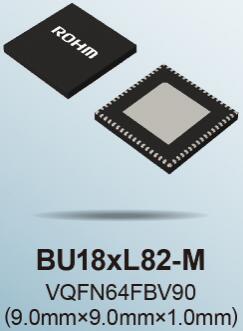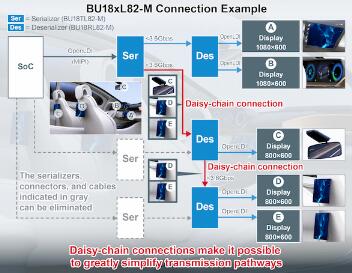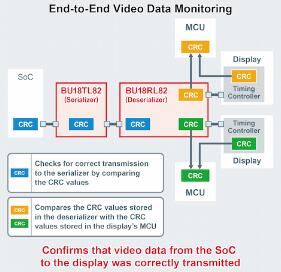Manufacturers
- Abracon
- Adam Tech
- Aerospace, Defense & Marine
- Agastat
- AIC
- AKM Semiconductor
- Alcoswitch
- Allegro
- Alps Electric
- Altera
- AMI Semiconductor
- AMP
- ams
- Analog Devices (ADI)
- Aptina Imaging
- Atmel
- Avago / Broadcom
- AVX
- Axicom
- Bccomponents
- Beyschlag
- BI Technologies
- Bourns Inc.
- Bowei Integrated Circuits
- Bridgelux
- Buchanan
- California Micro Devices
- Catalyst Semiconductor
- CGS
- Cirrus Logic
- Citizen Electronics
- CML Microcircuits
- Coiltronics
- Cooper Bussmann
- Corcom
- Core Logic
- Cree
- CSR PLC
- CTS
- Cypress Semiconductor
- Dale
- Data Image
- Deutsch
- Diodes Incorporated
- DOMINANT Opto Technologies
- E-T-A
- Eaton
- ECS
- Edison Opto
- Elcon
- EPCOS
- Epistar
- Epson
- Everlight Electronics
- Exar
- Fairchild Semiconductor
- FCI
- Freescale Semiconductor
- Fremont Micro Devices (FMD)
- Fujitsu Semiconductor
- Fulltech Electric
- General Semiconductor
- Harvatek
- Holsworthy
- Hsuan Mao Technology
- IDT
- Infineon Technologies
- Innolux
- International Rectifier (IR)
- Intersil
- IRC
- ISSI
- IXYS-IC
- Jing Cheng Electronical
- JL World
- Johanson Dielectrics
- Johanson Technology
- JRC / NJR
- JST
- KEC
- Kilovac
- Kingbright
- Kyocera Industrial Ceramics
- LEDiL
- Linear Technology / ADI
- Lite-On Technology
- Littelfuse
- Lumex
- Lumileds
- Luminary Micro
- Luminus Devices
- Macronix
- Maojwei / ZJPT
- Maxim Integrated
- MCC
- Mean Well Enterprises
- Microchip Technology
- Micron
- Microsemi
- Mini-Circuits
- Molex
- Murata Manufacturing
- Murata Power Solutions
- MWT
- National Semiconductor
- Nichicon
- Nippon Chemi-Con
- NJR / JRC
- NVE
- NXP Semiconductors
- OEG
- Omnivision
- ON Semiconductor
- Optek Technology
- Optrex
- OSRAM Opto Semiconductors
- OTAX
- Panasonic
- Peregrine(pSemi)
- Potter & Brumfield
- Power Integrations
- PowerStor
- Preci-Dip
- Prewell
- Products Unlimited
- Pulse Electronics
- PulseCore Semiconductor
- Qorvo
- Raychem
- Renesas Electronics
- RFMD
- Richtek Technology
- ROHM Semiconductor
- Rubycon
- Samsung Electro-Mechanics
- Samsung Semiconductor
- Schaffner
- Schrack
- Seiko Instruments, Inc. (SII)
- Semtech
- Sensata
- Seoul Semiconductor
- Sfernice
- Sharp Display
- Sharp Microelectronics
- Silicon Labs
- Siliconix
- Skyworks Solutions
- SoniCrest / JL World
- Spansion
- Sprague
- Stanley Electric
- STMicroelectronics
- Sunny Electronics
- Susumu (SSM)
- Taimag
- Taiyo Yuden
- TDK
- TDK-Lambda
- TE Connectivity
- Teccor
- Texas Instruments (TI)
- Thin Film
- Tianma Micro-electronics
- TOCOS
- TOKO
- Toshiba Electronic Components
- TT Electronics
- Tusonix
- TXC
- Tyntek
- Vishay
- Vishay Precision Group
- Vitramon
- Walsin Technology
- Weidmuller
- Welwyn
- Wickmann
- Winbond
- Xilinx
- Yageo
- Zetex Semiconductors
- ZJPT / Maojwei
뉴스
ROHM’s New SerDes ICs for Automotive Multi-Displays Simplify Video Transmission
2022-10-27 | 반환
ROHM has developed full-HD (1980×1080 pixels) compatible SerDes ICs (Serializer: BU18TL82-M, Deserializer: BU18RL82-M) – optimized for multi-screen vehicle displays.
Unlike typical SerDes ICs (serializers and deserializers) that must be connected in pairs for each video transmission, ROHM’s new BU18RL82-M deserializer can be daisy-chained to enable video transmission over multiple routes – using just a single serializer. Reducing the number of connectors and cables simplifies the video transmission paths – lowering both system costs and failure risks. The new products are also capable of monitoring whether video data is correctly transmitted end-to-end (from the SoC to the displays) by comparing CRC values. This feature supports functional safety in automotive applications.
“The arrival of more and more electronic innovations in automotive applications, such as mirrors or the use of LCDs in instrument clusters have increased the number of panels installed per vehicle, resulting in more complex video transmission paths. As this entails higher system costs and greater risk of failure, the challenge was to simplify the video transmission pathways as much as possible,” explains Stefan Drouzas, Senior Application Marketing Manager at ROHM “At the same time, it is important to incorporate functional safety features since frozen video in electronic mirrors and tell-tale image failures in instrument clusters can lead to serious accidents,” Stefan Drouzas continues.


The new products address these challenges with daisy-chain connectivity and end-to-end data monitoring. Furthermore, the optimized transmission rate, an integrated spread spectrum function and noise peak shifting minimize the power consumption and lower the noise.
On top, ROHM’s existing SerDes ICs for automotive camera applications of the BU18xMxx-C series, make them an ideal proposal for next-generation vehicle networks.
Going forward, ROHM will continue to support the evolution and safety of vehicles by developing ICs that not only reduce power consumption but improve reliability as well.
Product Lineup
The new BU18xL82-M series is qualified under the AEC-Q100 standard, ensuring automotive-grade reliability. The BU18TL82-M serializer in particular supports both the OpenLDI and MIPI-DSI input interfaces, enabling suitability for a wide range of SoCs.
Part No. |
Data |
Method |
Transmission |
Supply |
Input |
Serializer |
CLL-BD*1 |
1.1 to 1.3/ |
OpenLDI (Dual) or |
||
Deserializer |
CLL-BD*1 |
1.1 to 1.3/ |
CLL-BD*1(3.6Gbps×2) |
||
Output |
Operating |
Daisy- |
Replication |
AEC-Q100 |
Package (mm) |
CLL-BD*1(3.6Gbps×2) |
-40 to +105 |
- |
- |
✓ |
VQFN64FBV90 |
OpenLDI (Dual) |
-40 to +105 |
✓ |
✓ |
✓ |
*1: CLL-BD=Clockless Link-BD
*2: Data replication function. In the case of data output error on one route, the other route can be used to supplement the data output. It can also be used to project the same image on two screens for rear-seat monitors, etc.
Availability: Now (samples), September 2022 (in mass production)
ROHM’s SerDes ICs
ROHM’s SerDes ICs are characterized by low power consumption and low noise. ROHM has been producing the BU18xMxx-C series of SerDes ICs for vehicle camera modules with these features since June 2021.

・Basic Feature 1: Low Power Consumption
Optimizing the transmission rate according to the resolution allows data with the requisite resolution to be transmitted with the minimum amount of power, contributing to lower application power consumption.
・Basic Feature 2: Low Noise
In addition to the built-in spread spectrum function that reduces noise, a transmission rate optimization function is utilized to further lower noise by shifting the noise peaks, decreasing the number of man-hours required for noise countermeasures.
Terminology
● SerDes IC
A generic term for ICs typically used in pairs to convert communication methods for the purpose of high-speed data transmission. The serializer converts data into a form that can be easily transmitted at high speed (parallel to serial bus) while the deserializer converts the transmitted data back to its original form (serial to parallel bus).
● End-to-End
A term mainly used in the IT field to refer to the entire route, denoting ‘both ends of the communication path’.
● CRC (Cyclic Redundancy Check)
A method for verifying that data transmission (or recording) has been performed correctly. In high-speed interfaces such as SerDes, a CRC value is added when data is transmitted. Next, processing is performed on the receiving side to confirm that the data was correctly transmitted.
● Spread Spectrum Function
A function that spreads the noise energy over a large frequency band through frequency hopping instead of using a fixed frequency. This reduces EMI by lowering the peak noise value.
Click here to inquire about our products
Source: https://www.rohm.com





